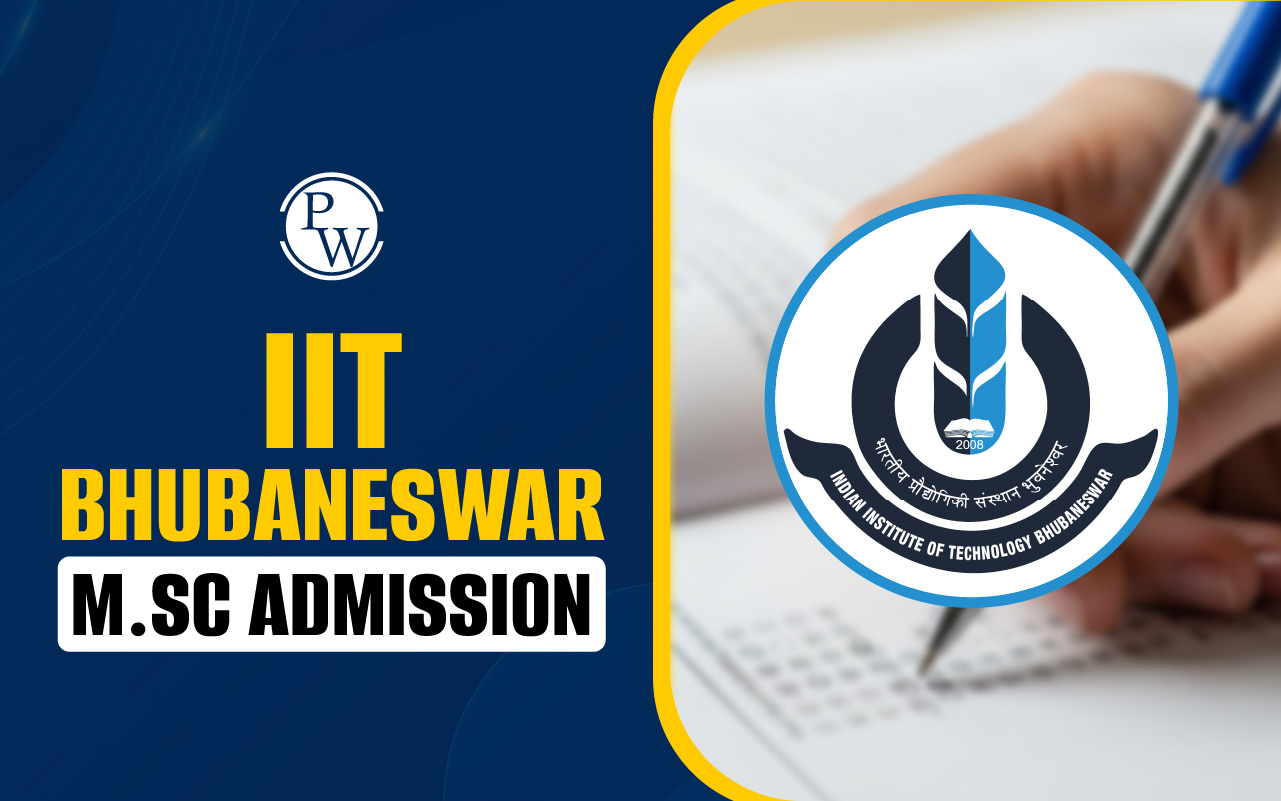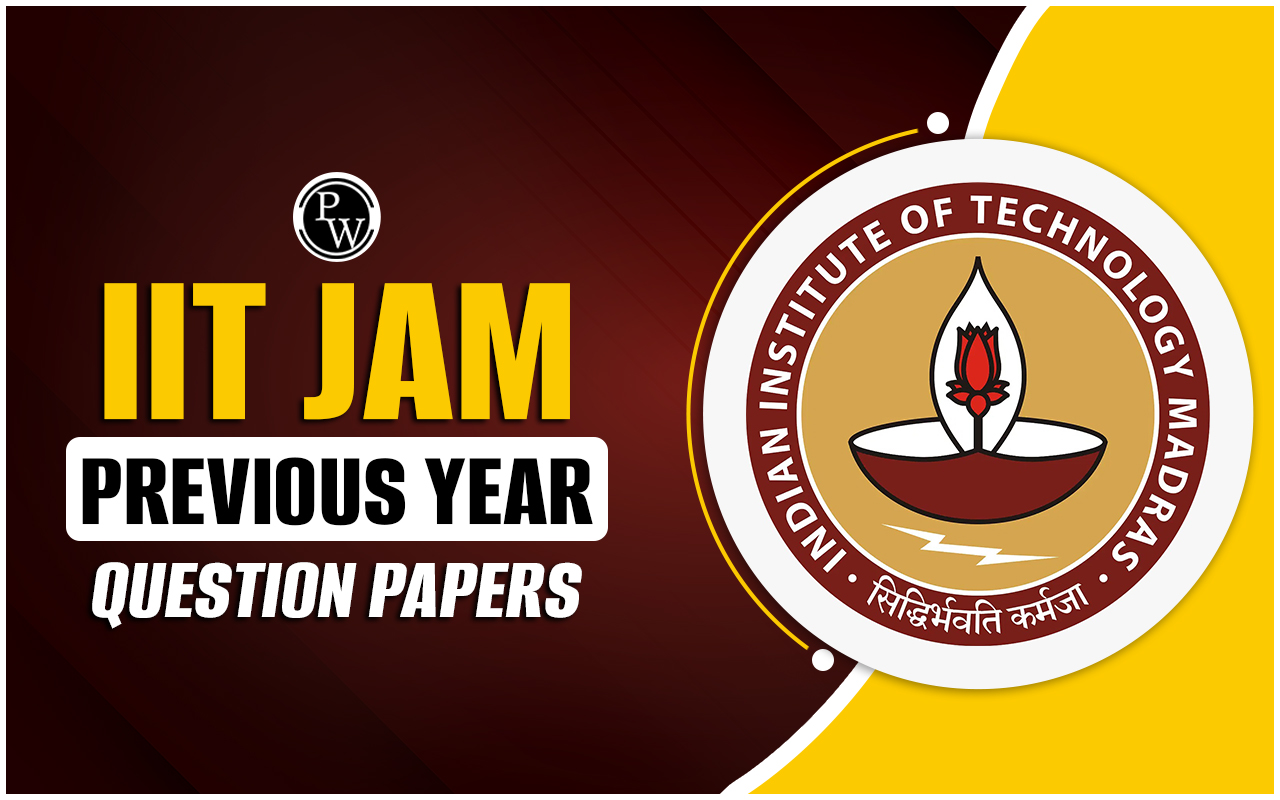Candidates preparing for the CUET PG 2025 in the biochemistry field should stay updated on the latest syllabus information. The NTA will soon release the updated CUET PG 2025 syllabus.
Candidates can view the previous year's syllabus in detail by clicking the provided link and downloading the PDF document.

CUET PG Biochemistry Syllabus 2025: CUET PG is a national-level exam conducted by the National Testing Agency (NTA) for admission into various postgraduate courses across central, private, state, and deemed universities in India. The CUET PG Biochemistry syllabus and notification for 2025 have not yet been released. Therefore, students should wait for the official CUET PG 2025 syllabus. In the meantime, students can refer to the syllabus for the previous year provided below.
CUET PG Exam is for students completing their undergraduate studies who wish to pursue postgraduate education at central universities. Administered by NTA, the CUET exam involves approximately 197 participating universities. The CUET PG Biochemistry syllabus, available in PDF format on the official CUET PG website, covers a laboratory-based approach to the intersection of biology and chemistry. Biochemistry investigates the chemical substances and vital processes within living organisms. Candidates can refer to the previous year's CUET PG Biochemistry syllabus in the article below.
CUET PG Biochemistry Syllabus 2025
CUET PG 2025 syllabus and notification have not yet been released. CUET PG is a national exam for postgraduate courses at state, central, private, and deemed universities across India. Currently, the previous year syllabus for CUET PG Biochemistry is the most recent information available. Students should wait for the official CUET PG Biochemistry Syllabus 2025 to be published. CUET PG Biochemistry syllabus is available in a PDF format on the official CUET PG website, published by the National Testing Agency (NTA).
The NTA provides the CUET PG Biochemistry syllabus in a 14-unit PDF on the CUET PG site. The biochemistry test includes 100 questions divided into two parts. CUET PG Biochemistry syllabus covers fundamental concepts and applications of biochemistry, including biomolecule structure, metabolic pathways, enzyme functions, and molecular biology techniques. It also explores the role of biochemistry in cell signaling, gene expression, and various diseases. Candidates can refer to the previous year's CUET PG Biochemistry syllabus below.
CUET PG Biochemistry Syllabus 2025 Overview
The National Testing Agency's official website will soon include the CUET PG Syllabus 2025 . The CUET PG is an important examination for students applying to postgraduate programs at their preferred universities. Candidates must become familiar with the CUET PG syllabus for 2025 to prepare effectively.
The NTA provides a detailed outline of the topics and subjects to be covered in the exam as a CUET PG syllabus PDF. This syllabus is a valuable resource for candidates looking to understand the units and topics necessary for success in the CUET PG 2025 computer-based exam. For an overview of the CUET PG Biochemistry Syllabus, candidates can check out the table below:
| CUET PG Biochemistry Syllabus 2025 Overview | |
| Particulars | Details (Tentative) |
| Examination Name | CUET PG Biochemistry Exam 2025 |
| Full Name | Common University Entrance Test (PG) |
| CUET PG Conducting Body | National Testing Agency (NTA) |
| Medium of Exam | English and Hindi |
| Number of Questions | 100 (all mandatory) |
| Type of Questions | Multiple Choice Questions |
| Marking Scheme |
|
| Total Sections in the Question Paper |
|
| Official Website | cuet.nta.nic.in |
CUET PG Biochemistry Syllabus PDF Download
| CUET PG Biochemistry Syllabus PDF Download (Previous Year) | |
| Subject | Download Link |
| CUET PG Biochemistry Syllabus PDF | Click Here |
CUET PG Unit Wise Biochemistry Syllabus 2025
Important topics covered in various units of the Biochemistry syllabus for CUET PG 2025 are given in the table below. This comprehensive syllabus provides a detailed overview of key concepts ranging from biochemistry fundamentals to advanced molecular biology and genetic engineering topics.
Candidates preparing for the CUET PG exam can use this table to organize their study plan and focus on specific areas within each unit. This syllabus, provided by the National Testing Agency (NTA), is a valuable resource for aspirants pursuing postgraduate courses in central, private, state, and deemed universities across India.
| CUET PG Section Wise Biochemistry Syllabus | |
| Unit | Details |
| Introduction to Biochemistry | Understanding Biochemistry as a discipline, fundamental properties of elements, role in biomolecule formation, chemical reactions, mole concept, molarity, water as a universal solvent, and fundamental laws in photochemistry. |
| Bioorganic Chemistry and Metabolites | Significance of organic reactions, electrochemistry in voltaic and electrolytic systems, chemical bonding, aliphatic and aromatic compounds, IUPAC nomenclature, polymer formation, stereochemistry in biomolecule conformations. |
| Cell Biology | Structure of cells, cellular events, subcellular organelles, cell theory, techniques for organelle fractionation, composition of cytoskeleton and extracellular matrix, cell cycle, division, and cell death mechanisms. |
| Biochemical Techniques | Chromatographic techniques, centrifugation, chromatography applications in biology, principles of electrophoresis, spectrophotometry, ELISA, and their applications. |
| Biomolecules | Biomolecules in living cells, contributions of scientists, properties of carbohydrates, proteins, lipids, cholesterol, DNA, RNA, glycoproteins, glycolipids, fermentation, and biodiesel manufacturing. |
| Nutrition | Glycemic index, balanced diet, micronutrient deficiencies, nutraceuticals, junk foods hazards, specialized food for diabetes, pregnancy, genetic disorders, use of alternate crops, and merits of vegetarianism. |
| Metabolism | Importance of lipids, high-energy compounds, electron transport chain, ATP synthesis, TCA cycle, anaplerotic reactions, redox balance, metabolic enzymes, metabolic engineering for biomolecule production. |
| Bioenergetics and Membrane Biology | Basic concepts of bioenergetics, mechanisms of oxidative and photophosphorylation, biomembrane composition, transport mechanisms, ATP synthesis. |
| Human Physiology | Signal transduction by hormones, gaseous exchange in tissues and lungs, respiratory adaptation to high altitude, hemoglobin vs. myoglobin, muscular dystrophies, nitrogen metabolism. |
| Clinical Biochemistry | Constituents of urine, blood, their significance, liver, kidney diseases, cancer mechanisms, triglycerides, lipoproteins, enzyme roles in disease diagnosis. |
| Microbiology | Contributions of Pasteur, Jenner, Koch in microbiology, antibiotics discovery, drug resistance, microbiome in human health, metabolic engineering, synthetic biology in microorganisms. |
| Immunology | Immune system structure, functions, immunoglobulins, genetic basis of antibody diversity, humoral, cell-mediated, innate immune responses, hypersensitivity, vaccines, antigen-antibody interaction. |
| Enzymology | Enzymes and their role in biological reactions, differences between chemical and biocatalysts, activation energy importance in biological reactions. |
| Molecular Biology and Genetic Engineering | DNA as genetic material, replication, transcription, repair, translation, eukaryotic genome coding and non-coding regions, lac operon exposure, PCR, expression vectors, transgenic crops, genomics, proteomics, metabolomics. |
CUET PG Biochemistry Syllabus 2025 Preparation Tips
CUET PG is a national-level entrance test providing opportunities for various courses at top universities across India. Aspiring candidates for CUET PG Biochemistry 2025 can follow these helpful tips:
- Familiarize Yourself with Exam Pattern and Syllabus: Familiarize yourself with the CUET PG Exam Pattern 2025 and CUET PG Syllabus 2025 before beginning your preparation. You must understand the question distribution, format, and grading system to create a strategy.
- Subject-Specific and General Preparation: Carefully review the syllabus for your chosen subject and ensure that you are comprehensively prepared. Ensure you give the general paper enough time to prepare; it will help you perform better overall.
- Practice Mock Tests and Previous Papers: After completing the syllabus, engage in CUET Mock Tests and solve previous year's question papers. This practice aids in understanding the question structure, improving speed, and enhancing accuracy.
- Select Relevant Study Material: Avoid using too many books; choose essential ones relevant to your subject to maintain focused and effective preparation.
- Comprehensive Books for In-Depth Knowledge: Opt for books that cover the entire syllabus comprehensively, providing detailed information required for the exam.
Candidates can improve their chances of passing the CUET PG by adhering to these guidelines and approaching their preparation.
Physics Wallah, a leading online coaching platform for CUET PG in India, provides cost-effective, inclusive, and easily accessible student services. Students can access advanced features and enriched learning experiences by enrolling in our CUET PG Online Coaching program for various subjects. We are committed to providing top-notch education nationally, recognizing the pivotal role that education plays in the success of every student.
CUET PG Biochemistry Syllabus 2025 FAQs
What is the CUET PG exam syllabus?
The CUET 2024 Syllabus Part A includes Verbal Ability, General Knowledge, Mathematics, English, Quantitative Ability, Data Interpretation, Computer Basics, and Logical Reasoning. Part B questions are based on domain knowledge.
What are the topics covered in MSc Biochemistry?
MSc Biochemistry subjects encompass molecular biology, enzymology, protein structure and function, metabolic pathways, genetics, and biophysical techniques. Students also study drug development, genetic engineering, and diagnostic applications.
Is CUET PG challenging?
The CUET exam is not inherently difficult. It is conducted by the NTA for the first time, aiming to facilitate admission to India's Top Central Universities. While it poses a moderate difficulty level, adequate preparation can achieve successful performance.
Who is eligible for M.Sc Biochemistry?
Eligibility criteria for M.Sc Biochemistry include qualifying 10+2 from a recognised board and securing a minimum aggregate score of 50% in the BSc degree or equivalent. Additionally, candidates may need to appear and qualify in national and state-level entrance examinations for admissions.
Is M.Sc Biochemistry a promising career?
Graduates with an MSc in Biochemistry can work as lab technicians, biochemists, pharmacologists, quality controllers, research associates, etc. after graduation. The average salary for MSc Biochemistry graduates ranges between INR 3.8 LPA and INR 2 LPA.
Talk to a counsellorHave doubts? Our support team will be happy to assist you!

Check out these Related Articles
Free Learning Resources
PW Books
Notes (Class 10-12)
PW Study Materials
Notes (Class 6-9)
Ncert Solutions
Govt Exams
Class 6th to 12th Online Courses
Govt Job Exams Courses
UPSC Coaching
Defence Exam Coaching
Gate Exam Coaching
Other Exams
Know about Physics Wallah
Physics Wallah is an Indian edtech platform that provides accessible & comprehensive learning experiences to students from Class 6th to postgraduate level. We also provide extensive NCERT solutions, sample paper, NEET, JEE Mains, BITSAT previous year papers & more such resources to students. Physics Wallah also caters to over 3.5 million registered students and over 78 lakh+ Youtube subscribers with 4.8 rating on its app.
We Stand Out because
We provide students with intensive courses with India’s qualified & experienced faculties & mentors. PW strives to make the learning experience comprehensive and accessible for students of all sections of society. We believe in empowering every single student who couldn't dream of a good career in engineering and medical field earlier.
Our Key Focus Areas
Physics Wallah's main focus is to make the learning experience as economical as possible for all students. With our affordable courses like Lakshya, Udaan and Arjuna and many others, we have been able to provide a platform for lakhs of aspirants. From providing Chemistry, Maths, Physics formula to giving e-books of eminent authors like RD Sharma, RS Aggarwal and Lakhmir Singh, PW focuses on every single student's need for preparation.
What Makes Us Different
Physics Wallah strives to develop a comprehensive pedagogical structure for students, where they get a state-of-the-art learning experience with study material and resources. Apart from catering students preparing for JEE Mains and NEET, PW also provides study material for each state board like Uttar Pradesh, Bihar, and others
Copyright © 2025 Physicswallah Limited All rights reserved.
Get App









